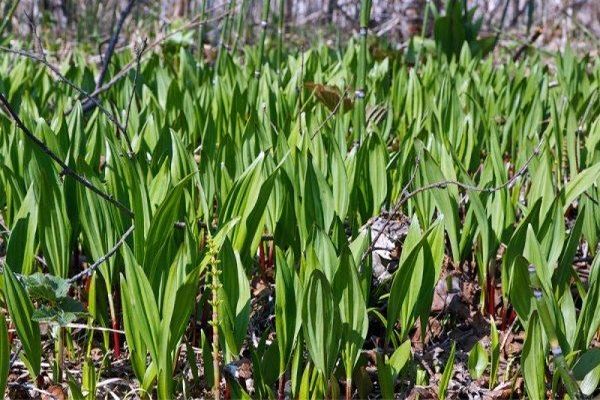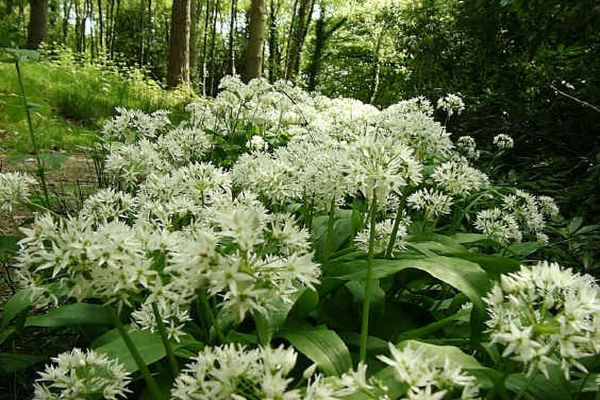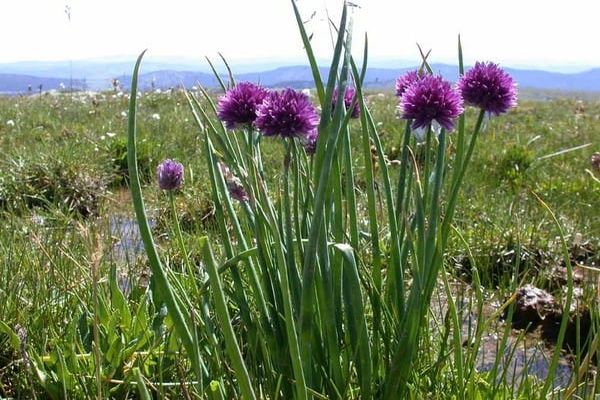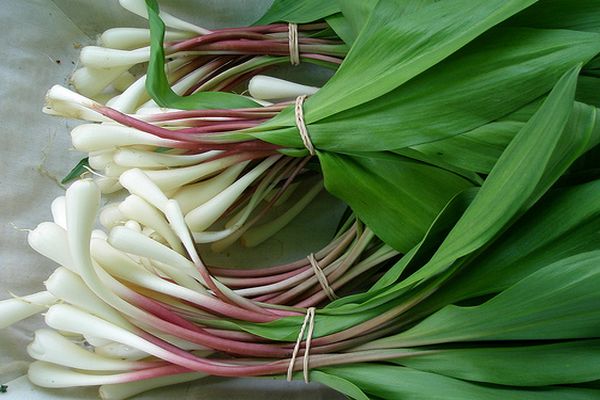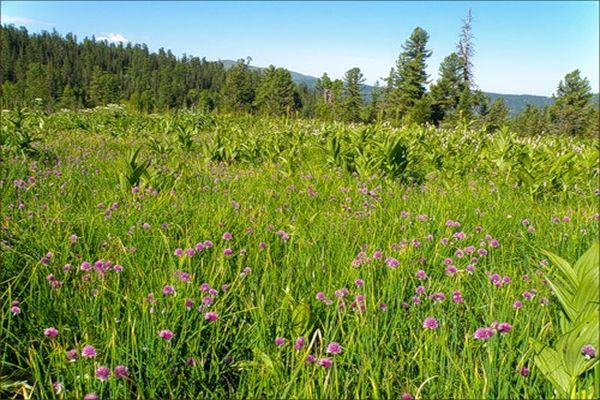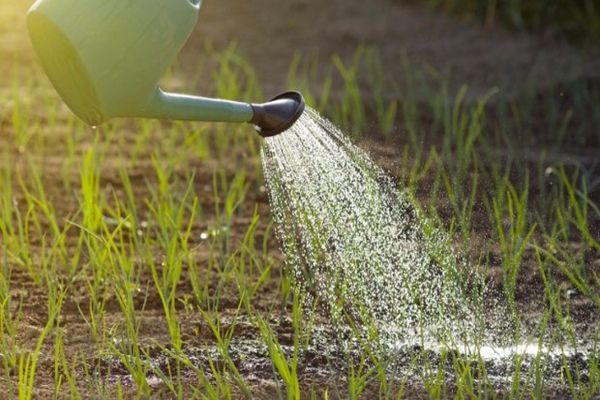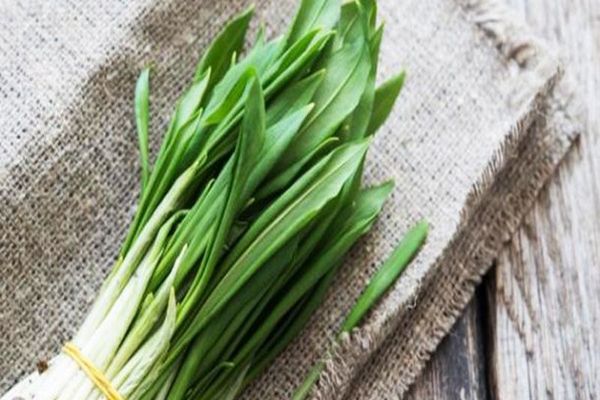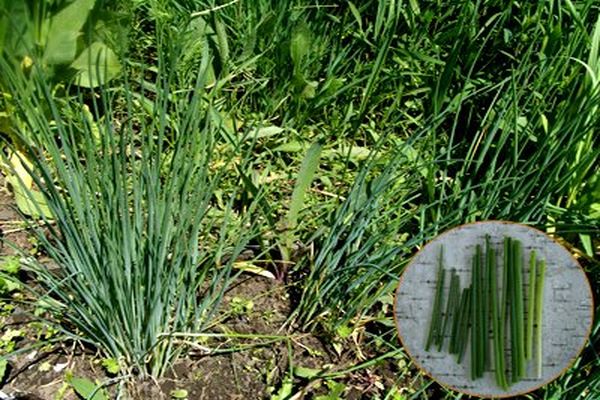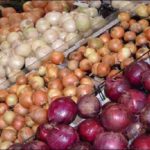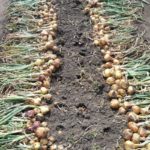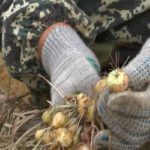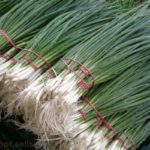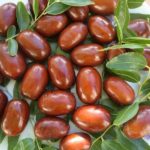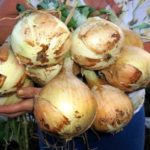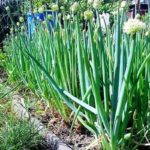Sweet onion is often used in gardening as an ornamental and medicinal plant. The spicy taste and aroma made fragrant onions one of the popular spices in the east. The stems of fragrant onions are about 1 cm in diameter. They are used not only as a tasty spicy seasoning for dishes, but also to treat many diseases. It’s easy to grow a crop on your own plot; the cultivation technology is no different from cultivating others onion varieties and garlic.
Spicy greens - a mix of onions and garlic
Wild onions began to be grown on the site in the east quite a long time ago.In China, Mongolia and Japan, it is grown in all regions and is often used in cooking. One of the names of this plant is Chinese garlic. Under natural conditions, the crop grows on rocky slopes, along the banks of mountain rivers and hills. In Asia, Chinese garlic has been used for a long time, and in European countries it was brought by Chinese nomads.
The plant is a perennial. Allspice or Chinese garlic is a low-growing plant, the stems of which reach 30–35 cm in length. The rhizome is formed horizontally, on which small bulbs are located. The bulbs consist of film and mesh scales. Each bulb forms a rosette of leaves of 5–6 pieces. After winter, the bulb forms several more daughter bulbs, so after a year a lush bush of Chinese garlic grows from several bulbs.
In the summer, in the second year after planting, the crop throws out long peduncles that look like inflorescences-cases. Until the inflorescences begin to bloom, the stems are soft and juicy, suitable for consumption. When the flower umbrellas begin to bloom, they emit a rich honey aroma that attracts a large number of insects. This is where the culture got its name - fragrant onion.
Sweet onion is easily confused with other varieties of the crop. But there are a number of features by which it is distinguished from other varieties:
- The leaves are thin and succulent, but not tubular, but flat.
- It has an onion-garlic aroma, but not as spicy and pungent as wild garlic, but rather piquant.
- It is allowed to eat feathers and arrows of Chinese garlic.
- The main feature is the rich floral aroma of the inflorescences, which no other variety has.
In China, sweet onion or Chinese garlic is used in folk medicine.They also decorate main courses and various snacks. The fresh plant has a strong spicy aroma.
Food medicinal and decorative properties
From the photo of fragrant onions, you can understand that they are not only edible and used to prepare various medicines, but also act as an ornamental plant for decorating flower beds. The fragrant, spicy smell of fragrant onions attracts bees to the site, therefore, if there are problems with the formation of flowering in crops, fragrant onions are planted near the beds.
The fragrant onion bulb of the Aprior variety is planted one at a time, and after 1–2 years a lush green bush grows in that place.
Fragrant onion, or as it is called in Kazakhstan, Dzhusai, is difficult to imagine in Asian cuisine. Feathers are used to prepare snacks, served with meat, and sauces made from them. In addition, feathers are dried and used as a spicy seasoning for various dishes. The arrows taste like wild garlic. They are marinated or fried in a similar way to garlic arrows. The beneficial components of vitamins and microelements that are part of Jusai help to cope with many diseases.
Folk recipes using wild onions:
- 100 g of fresh feathers are poured with 2 parts of vodka and infused for 14 days. You can rub the infusion on bruises, bruises and abrasions.
- Including fresh Chinese garlic in your diet removes toxins from the body, improves immunity and helps cope with colds.
- The young greenery of the plant strengthens the walls of blood vessels, the circulatory system, and the heart muscle.
Greens contain a small amount of fiber, so it is recommended to be consumed in the diet of people with diseases of the gastrointestinal tract.
The best varieties
Among the variety of varieties of Chinese garlic, it can sometimes be difficult to choose. The best varieties for planting on a personal plot:
- Dzhusai onion is a fragrant variety that is distinguished by its late ripening of feathers. Pruning can be done until late autumn. The leaves reach 25–30 cm in length. The shade of green is light green-gray.
- The fragrant onion Aprior is a variety with a mid-season ripening period and a full harvest can be harvested in the last days of May. The bush branches heavily, with up to 10 leaves formed on each shoot. Aprior contains a large amount of vitamin C.
- Among the names of the best varieties is Piquant. It belongs to salad varieties with high resistance to severe frosts and a delicate taste of greens that lasts throughout the summer. Like bear onions, Chinese garlic is rich in vitamins and microelements, so no matter what variety grows on the site, it is impossible to overestimate the benefits of its use.
Care and planting technology
Growing branched onions is not difficult; the technology for growing this crop is no different from growing regular onions. In the wild, Chinese garlic grows in meadows, but in the garden it is planted anywhere. It is advisable to choose fertile, light soils in open, sunny areas. The crop will not grow well under the canopy of trees and in partial shade.
Compared to other varieties of onions, Chinese garlic is more heat-loving, so it is advisable to choose areas that are covered with snow in winter.
Plant care includes:
- Regular watering.It is important to ensure that the soil is not over-moistened. If this happens, the rhizome will begin to rot.
- Jusai is not picky about the soil composition, but if you feed the soil before planting, the greens will be more juicy and tender.
- Once a month you need to remove weeds from the site, and every two weeks you need to weed the beds with spices.
Jusai is completely undemanding in care. The main thing is to water it on time and periodically thin out the plantings so that it does not overrun the area. For the winter, the greens are cut off and the rhizome is protected from frost in the northern regions.
Planting by seeds
Sweet onions are planted by seeds. This method is considered one of the simplest. Planting and growing Jusai onions depends on climatic and weather conditions. Before planting, make a furrow in the bed and water it with a small amount of water. Seeds are poured to a depth of 1–1.5 cm. The grooves are covered with humus on top. At the end of planting, water thoroughly.
Optimal timing for planting planting material:
- Before winter (if you plant the seeds in late autumn, the greens can be eaten as early as March).
- If you plant seeds in April, then in the year of planting it is better not to touch the spice and let it get stronger.
- In summer until July 15. Planting during this period will allow you to enjoy fresh greens in April.
Before planting in open ground, the seeds are soaked for two days in water at a temperature of 40 degrees. On the third day, the planting material is simply soaked in warm water. The seedlings are thinned out as they germinate. Some of the sprouts are left, the other is used for food.
Reproduction by shoots
From a photo of a fragrant onion you can determine how many years it has been growing in the same place. If the bushes have become too large, this signals the need to transplant the bulbs to a new location.In order for there to be a lot of wild garlic greens, it must be thinned out regularly.
In the fall, after flowering, the whole bush is dug up and divided into several parts. The stem should be bare. Each part should have 2-4 onions. Separated parts are planted at intervals of 20–25 cm.
What to pay attention to when leaving?
Fragrant onions are unpretentious in care, but, nevertheless, some rules of agricultural technology must be followed. If you don’t pay attention to the onion, you can see that it has become less lush and the feathers are juicy.
Features of caring for bear onions or wild garlic:
- Ramson is a common plant that needs to be watered several times a week.
- In some species, when sowing seeds, the greens are not cut off in the first year after planting.
- Thinning provides access to nutrients to the root system. In autumn, the thickets are thinned out so that the distance between them is 8–10 cm. With the onset of spring, they are thinned out further so that the interval is up to 29 cm.
- In the first year after planting, onions are often not watered so that they can grow foliage and become juicy.
- From the second year, abundant watering is required several times a season, usually 8–9 waterings.
- The first fertilizing with organic fertilizers is done after sowing (chicken manure is used), then after each mass pruning of greenery, mineral fertilizers are applied.

